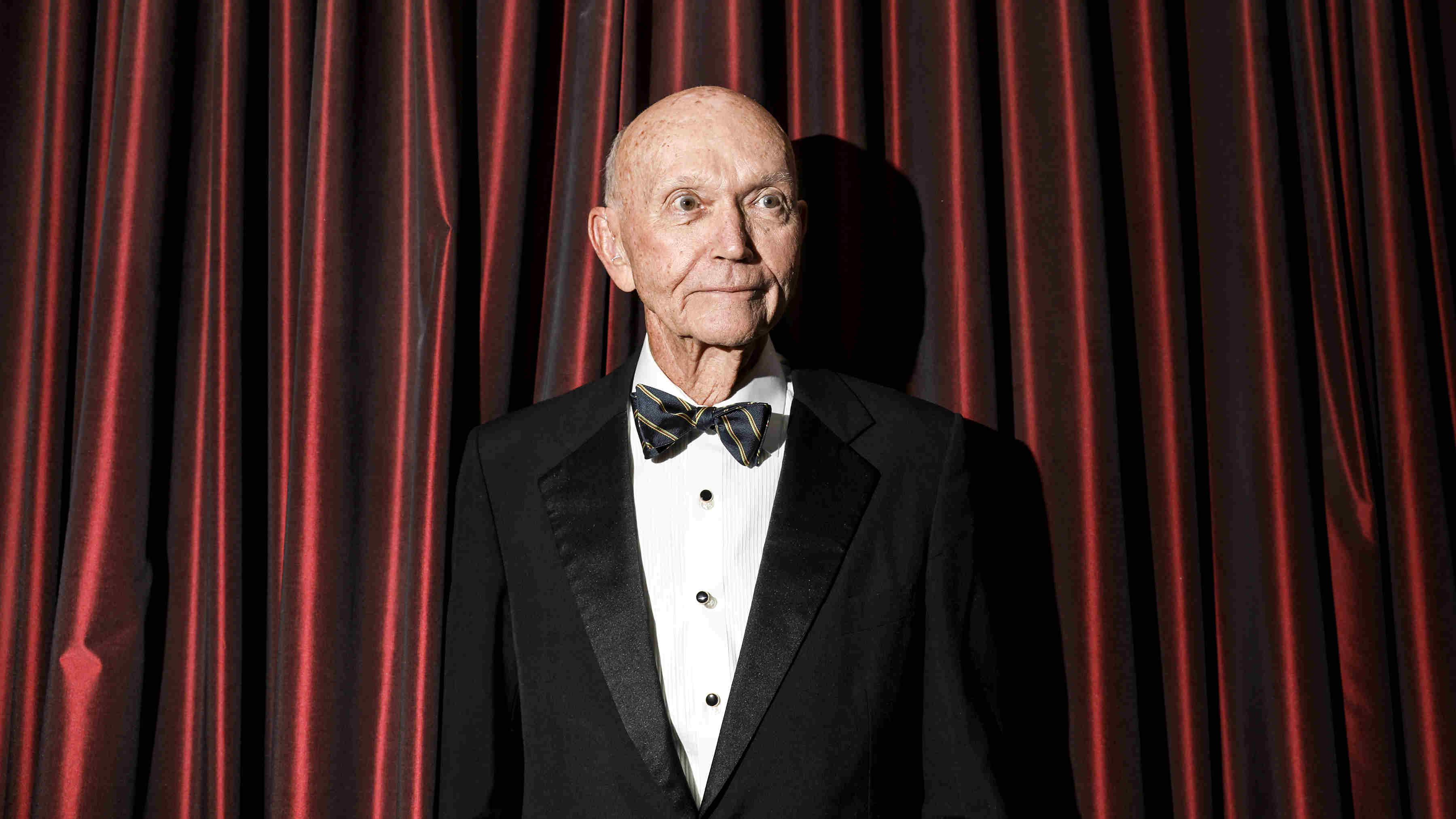Michael Collins, who piloted the Apollo 11 spacecraft Columbia in orbit 60 miles above the moon while his crewmates, Neil Armstrong and Colonel Buzz Aldrin, became the first men to walk on the lunar surface, died on Wednesday. He was 90.
A statement released by Collins’s family on Twitter said the cause was cancer.
It was an epic moment of exploration, an instant when the fantasy of science fiction writers became a reality. And when it transpired, Lieutenant Colonel Michael Collins of the Air Force was the loneliest man in history.
When the lunar module Eagle, descending from Columbia, touched down on the moon on July 20, 1969, Colonel Collins lost contact with his crewmates and with Nasa, his line of communication blocked as he passed over the moon’s far side. Blackouts would occur during a portion of each orbit he would make.
“I am alone now, truly alone, and absolutely isolated from any known life,” he wrote in recreating his thoughts for his 1974 memoir, Carrying the Fire.
“If a count were taken, the score would be three billion plus two over on the other side of the moon, and one plus God only knows what on this side,” he added. “I like the feeling. Outside my window I can see stars — and that is all. Where I know the moon to be, there is simply a black void.”
After 48 minutes cut off from any human voice, Colonel Collins emerged from the moon’s far side. “My windows suddenly flash full of sunlight as Columbia swings around into the dawn,” he wrote. “The moon appears quickly, dark, grey and craggy.”
Colonel Collins contacted Nasa and learned that the lunar module had touched down safely, Armstrong having radioed: “Houston, Tranquillity Base here. The Eagle has landed.”
Peering down from Columbia as he orbited at 3,700 miles per hour, Colonel Collins spotted the lunar module briefly, and he made radio contact with Armstrong and Colonel Aldrin before their moonwalks. (He was too far above to actually see them walking on the surface.)
He also heard President Richard M. Nixon’s telephone call to the two men as they stood on the moon, congratulating them on the magnitude of that moment.
Colonel Collins, who had begun flying in 1952, had hurtled through the skies as a test pilot and orbited the Earth 43 times in the Gemini 10 capsule.
In 2019, he recalled his orbit of the moon for the 50th anniversary of the Apollo 11 mission. “I had this beautiful little domain,” he told The New York Times. “I was the emperor, the captain of it, and it was quite commodious. I had warm coffee, even.”
He may have been the “third man” that day, but he was busy completing the items on his task list. “I was nervous about getting every syllable of it exactly right, because this was going to be the day,” he remembered. “This was no fooling around. This was it.”
Colonel Collins was greatly worried about the moment when the lunar module was to blast off from the moon to dock with Columbia for the trip back to Earth. He knew that if the lander’s ascent engine malfunctioned, Armstrong and Colonel Aldrin might be stranded on the lunar surface, or sent into a wild orbit.
“What happens if they veer this way, that way, the other way?” he remarked 50 years later, noting that he had carried a packet around his neck containing 18 contingency plans for rescuing his crewmates.
As he wrote of the moment in his memoir: “My secret terror for the last six months has been leaving them on the moon and returning to Earth alone; now I am within minutes of finding out the truth of the matter. If they fail to rise from the surface, or crash back into it, I am not going to commit suicide; I am coming home, forthwith, but I will be a marked man for life and I know it.”
The ascent from the moon and the docking of Columbia and the lunar lander proved flawless. When the Apollo 11 down in the Pacific Ocean, they were American heroes.
New York Times News Service











